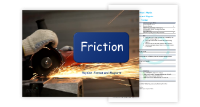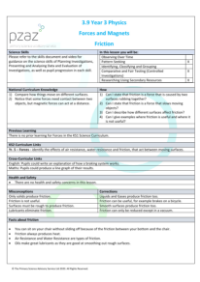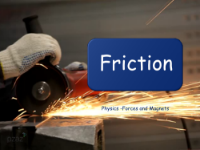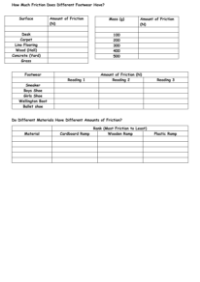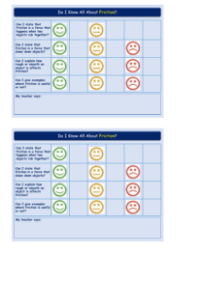Friction - Teacher Explanation

Science Resource Description
Welcome to lesson 3.9 on Friction, part of the Year 3 Forces and Magnets unit. In this session, we explore the national curriculum objectives that require pupils to understand how different surfaces affect movement and to recognise that while some forces require contact between two objects, others, such as magnetic forces, do not. This lesson presents an excellent opportunity to integrate cross-curricular elements, where pupils can exercise their English skills by writing a description of braking systems, and their Maths skills by graphing experimental results. There are no specific health and safety concerns for this lesson, allowing for a focus on hands-on activities and practical demonstrations.
The first activity, named 'Warm Hands', requires pairs of hands, rubber gloves, and optionally, woollen gloves. Pupils will rub their hands together to feel the heat generated by friction, observing that more heat is produced when they rub faster and apply more pressure, illustrating the principle that friction generates heat. This concept is further explored through an investigation of the friction exhibited by different types of shoes, where pupils examine the soles made of various materials. Using a spring balance, water, and a measuring cylinder, they measure the force required to move the shoe, discovering how mass affects friction. Another activity, 'Ramps and Blocks', involves comparing the movement of blocks covered with different materials down a ramp to determine which materials create more friction. Finally, pupils are tasked with writing a report on whether friction is useful or not, providing examples of its benefits and drawbacks in everyday situations. This comprehensive lesson aims to provide a thorough understanding of friction and its practical implications in the real world.

